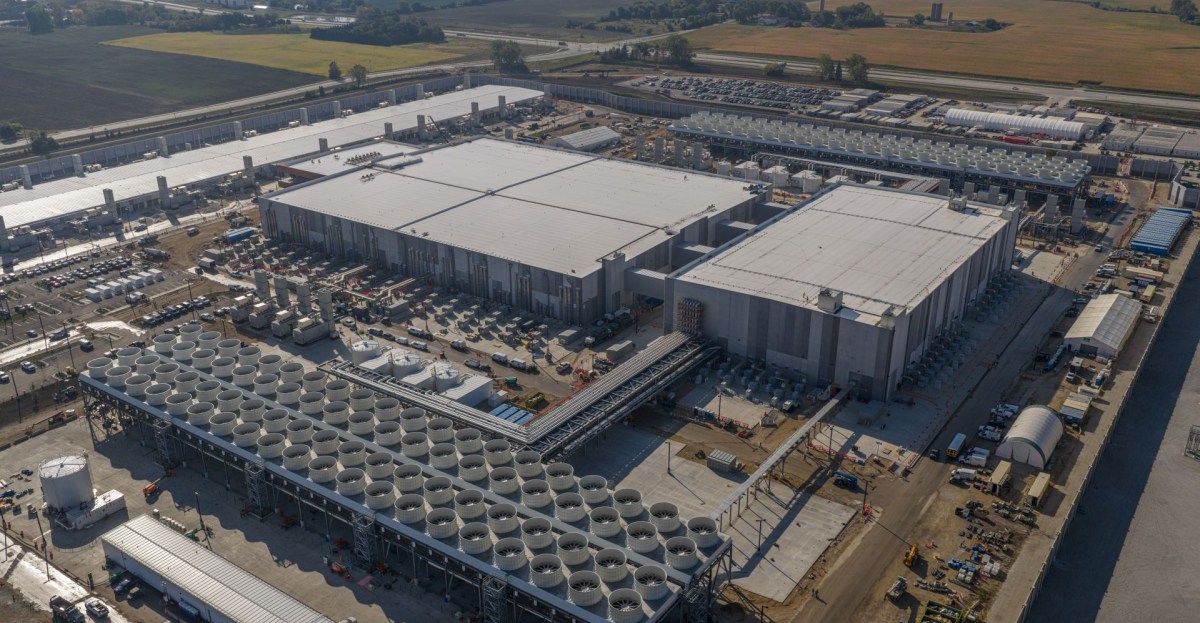
Cut Model Deployment Costs While Keeping Performance With GPU Memory Swap
Sources: https://developer.nvidia.com/blog/cut-model-deployment-costs-while-keeping-performance-with-gpu-memory-swap, https://developer.nvidia.com/blog/cut-model-deployment-costs-while-keeping-performance-with-gpu-memory-swap/, NVIDIA Dev Blog
TL;DR
- Deploying large language models at scale creates a trade-off between provisioning more GPUs for peak demand and risking SLA violations during traffic spikes.
- GPU memory swap, also called model hot-swapping, enables multiple models to share the same GPUs even if their combined memory exceeds capacity, improving auto-scaling efficiency and utilization.
- In practical tests, TTFT (time to first tensor) with memory swap was in the 2–3 second range for presented pairings, representing a 50–66x improvement over scaling from zero.
- Compared with fully warm, fully loaded GPUs, memory swap can deliver substantial cost savings with only a modest latency trade-off, and can help consolidate workloads onto fewer GPUs while maintaining SLAs.
- NVIDIA Run:ai Model Streamer can help reduce TTFT for scale-from-zero scenarios by tens of seconds, while GPU memory swap pushes TTFT to sub-10 seconds for many applications.
Context and background
Deploying large language models (LLMs) at scale presents a dual challenge: keeping responses fast during demand spikes and controlling GPU costs. Operators often face a difficult choice: provision additional GPUs to handle peak load and incur ongoing expenses, or risk slowing service levels during traffic surges. Neither option is ideal for large-scale inference. NVIDIA Run:ai proposes GPU memory swap, also known as model hot-swapping, as a new mechanism to push GPU utilization further and improve auto-scaling efficiency for inference workloads. This approach introduces a more dynamic way to allocate GPU resources, enabling multiple models to share GPUs even when their combined memory requirements would exceed available capacity.
What’s new
Hot-swapping allows more dynamic resource management in serving models by letting multiple models coexist on the same GPUs. In practice, this means you can better adapt to unpredictable workloads and avoid costly over-provisioning. To illustrate performance, the NVIDIA team simulated realistic LLM deployment scenarios. They evaluated two model groups:
- Group 1: Llama 3.1 8B and Mistral-7B
- Group 2: Llama 3.1 8B and Falcon-11B Key observations from the tests:
- TTFT is constrained by PCI bandwidth and the time to swap models between CPU and GPU memory, rather than by the models themselves.
- For both batches—Llama 3.1 8B Instruct with Mistral-7B, and Llama 3.1 8B Instruct with Falcon-11B—TTFT remained consistently in the 2–3 second range across model pairs and input sizes. Falcon-11B showed a slightly longer TTFT (~0.5 seconds more) than Mistral-7B due to its larger memory footprint, but this difference is small in real-world terms.
- Overall, memory swap produced roughly a 50–66x improvement in TTFT compared with scaling from zero, depending on model type and input length.
- The baseline scenario of models already fully loaded into GPU memory (warm) yields near-instant responses but requires dedicating GPUs to individual models at all times, which can be costly when workloads vary or multiple models are needed.
- GPU memory swap reduces TTFT to a few seconds, enabling consolidation of workloads onto fewer GPUs while maintaining stringent SLAs.
- NVIDIA Run:ai Model Streamer can help cut TTFT for scale-from-zero by tens of seconds, but GPU memory swap can push TTFT into sub-10-second territory for many real-time applications.
Source: NVIDIA Run:ai GPU memory swap (model hot-swapping) approach and the described test results are presented by NVIDIA in their developer blog. See the live discussion at the linked article for more details: NVIDIA Run:ai GPU memory swap.
Why it matters (impact for developers/enterprises)
For organizations deploying LLMs at scale, memory swap offers a practical path to reduce idle GPU costs without sacrificing user experience. By allowing multiple models to share the same hardware, teams can consolidate workloads onto fewer GPUs and still meet SLAs during demand spikes. This dynamic resource sharing can limit over-provisioning and reduce total cost of ownership for inference fleets, while preserving responsive inference times needed for real-time applications. The approach also aligns with use cases requiring rapid scaling that cannot afford long initialization delays when loading models on demand.
Technical details or Implementation
The memory swap mechanism hinges on transferring models between CPU and GPU memory and loading them on demand, rather than keeping every model resident on GPU at all times. The performance envelope is shaped by PCIe bandwidth and the time it takes to swap models between host memory and device memory. In the reported tests, warm baselines (models fully loaded on GPU) delivered near-instant responses but at a high cost due to sustained GPU occupancy. In contrast, memory swap makes it possible to consolidate workloads onto fewer GPUs and still sustain acceptable latency for real-world SLAs. In practical terms, the test setup swapped models from CPU memory into GPU memory as requests arrived, performing dynamic hot-swaps to satisfy inference requests. This demonstrated that TTFT can be kept in the few-second range even for multi-model deployments, with occasional small variations depending on the specific model combination and input length. The approach is described as suitable for applications where sub-10-second TTFT is acceptable and where the cost savings from consolidating GPUs are a priority. It is important to note that while Run:ai Model Streamer can help reduce TTFT for scale-from-zero scenarios by tens of seconds, GPU memory swap pushes the boundary further to sub-10-second TTFT in practical deployments. This combination provides a compelling balance between performance and cost, enabling higher GPU utilization and more flexible scaling.
Key takeaways
- GPU memory swap enables multiple models to share GPUs beyond nominal capacity, improving auto-scaling efficiency and reducing over-provisioning.
- In tests, TTFT with memory swap was around 2–3 seconds for paired model scenarios, a 50–66x improvement over scaling from zero.
- The remaining latency is largely limited by PCI bandwidth and host-GPU data transfer, not by the model sizes themselves.
- Warm models (fully loaded on GPUs) offer near-instant responses but at a higher total cost due to persistent GPU occupancy.
- Sub-10-second TTFT is achievable in real deployments with memory swap, enabling consolidation of workloads and maintenance of SLAs; Run:ai Model Streamer can help reduce TTFT further in scale-from-zero use cases.
FAQ
-
What is GPU memory swap and how does it differ from traditional warm models?
GPU memory swap, or model hot-swapping, transfers models from CPU memory to GPU memory on demand, allowing multiple models to share the same GPUs even if their combined memory exceeds capacity. This contrasts with warm models, which require GPUs to be dedicated to each model at all times.
-
How does memory swap affect latency (TTFT) in practice?
In the tests cited, TTFT with memory swap was typically in the 2–3 second range for the evaluated pairings, with slight variations depending on input length and model memory footprints. This represents a substantial improvement over scaling from zero, which exceeded 140 seconds for small models and over 200 seconds for larger ones.
-
What are the trade-offs of using memory swap compared to fully loaded models?
The primary trade-off is a small latency increase relative to fully warmed models, but with significant cost savings from using fewer GPUs and better utilization. If sub-10-second TTFT is sufficient for an application’s SLAs, memory swap offers a favorable balance.
-
Can memory swap fully replace all GPU provisioning strategies?
The approach is designed to maximize GPU efficiency for inference workloads and to enable consolidation of workloads onto fewer GPUs while maintaining SLAs. Operators can still tailor provisioning strategies to match specific SLA requirements and traffic patterns, with memory swap as a complement to existing tooling such as Run:ai Model Streamer.
References
More news
NVIDIA HGX B200 Reduces Embodied Carbon Emissions Intensity
NVIDIA HGX B200 lowers embodied carbon intensity by 24% vs. HGX H100, while delivering higher AI performance and energy efficiency. This article reviews the PCF-backed improvements, new hardware features, and implications for developers and enterprises.
Predict Extreme Weather in Minutes Without a Supercomputer: Huge Ensembles (HENS)
NVIDIA and Berkeley Lab unveil Huge Ensembles (HENS), an open-source AI tool that forecasts low-likelihood, high-impact weather events using 27,000 years of data, with ready-to-run options.
Scaleway Joins Hugging Face Inference Providers for Serverless, Low-Latency Inference
Scaleway is now a supported Inference Provider on the Hugging Face Hub, enabling serverless inference directly on model pages with JS and Python SDKs. Access popular open-weight models and enjoy scalable, low-latency AI workflows.
How to Reduce KV Cache Bottlenecks with NVIDIA Dynamo
NVIDIA Dynamo offloads KV Cache from GPU memory to cost-efficient storage, enabling longer context windows, higher concurrency, and lower inference costs for large-scale LLMs and generative AI workloads.
Kaggle Grandmasters Playbook: 7 Battle-Tested Techniques for Tabular Data Modeling
A detailed look at seven battle-tested techniques used by Kaggle Grandmasters to solve large tabular datasets fast with GPU acceleration, from diversified baselines to advanced ensembling and pseudo-labeling.
Microsoft to turn Foxconn site into Fairwater AI data center, touted as world's most powerful
Microsoft unveils plans for a 1.2 million-square-foot Fairwater AI data center in Wisconsin, housing hundreds of thousands of Nvidia GB200 GPUs. The project promises unprecedented AI training power with a closed-loop cooling system and a cost of $3.3 billion.





